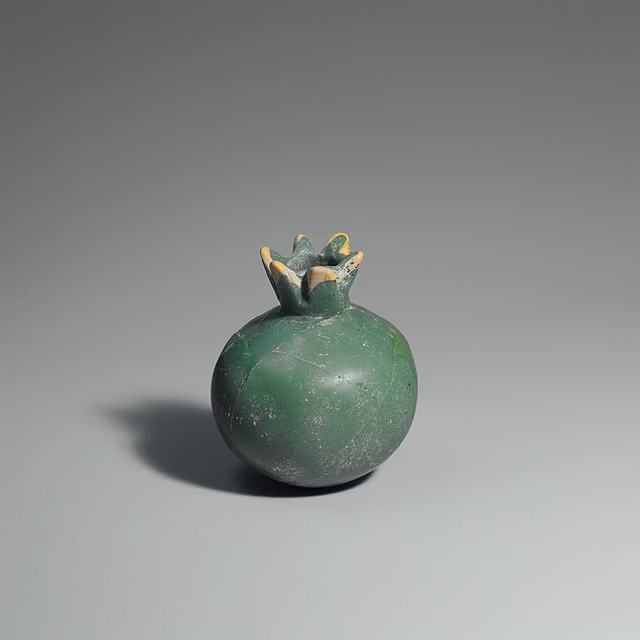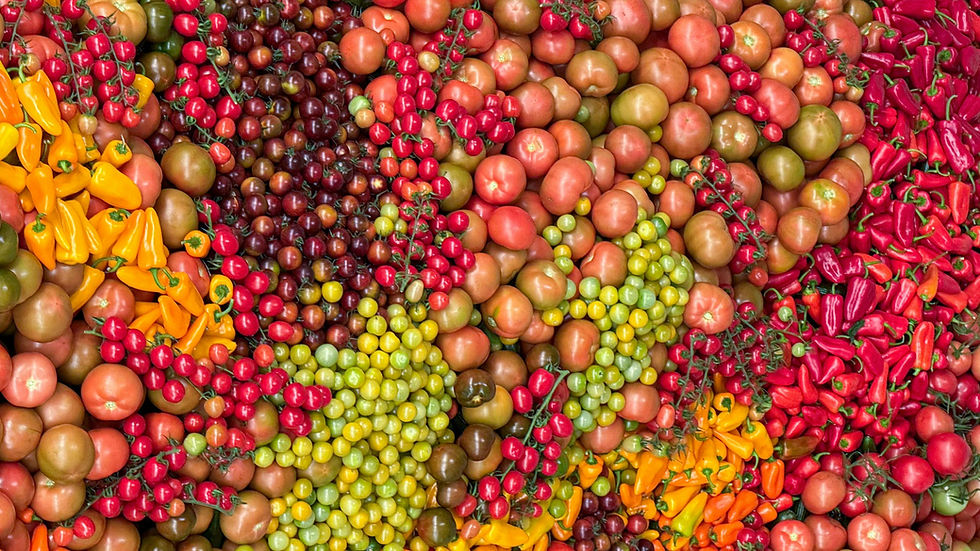Pomegranate: a fleeting jewel is now available
- Friends of Sustainable Agriculture

- Nov 7
- 4 min read
Fall is now at its peak, but for those of us who measure the year in foods, the change is sometimes more abrupt than we would want to. Suddenly we go to the market stalls and there is not a plum left. From one week to the next, the tomatoes are significantly less flavorful.
pomegranate-an-fleeting-jewel-is-now-availableAh, but there is one silver lining: it is time to enjoy the best pomegranates.

Enter one of the fruits that has captured the poetic imagination throughout the ages. Juicy, dramatically red, and sweet, the pomegranate appeared in many myths since antiquity. Persians, Greeks, Romans, they all incorporated the imagery of the bloody fruit to represent at different times fertility and war. Both the early Jews and Muslims feature this fruit in their sacred text, with clear instructions to include it as imagery in ritual clothing or to consume the seeds in celebratory contexts.
Left: a mosaic at the House of House of Dionysos in the Paphos Archaeological Park, Cyprus. Right: an Egyptian glass bottle from the New Kingdom, Ramesside period (dated ca. 1295–1070 B.C.), that belongs to the Egyptian art collection of the Met Museum.
The pomegranate also has a very distinctive shape. A large globe with a crown on top, the silhouette lends itself for representation and, as such, has been clearly identified in architecture and art all over the Mediterranean and Mesopotamia. It is shown in the hands of goddesses and kings, as the crown element also has been used to represent royalty. To this date it appears in the coat of arms of the Spanish royal family, as it became a symbol of the Kingdom after the conquest of the Iberian Peninsula in the late XV century.

It is no coincidence that the moment that crystallizes the victory of the Crown is the takeover of Granada –the Spanish city whose name is also the Spanish name for pomegranate. Shortly after, the Spanish sent their explorers out into the world, and planting pomegranate trees was a very quick shortcut to declare the power of the Crown. Thus, arrived on our shores this curiosity, which also gave nice supple wood, beautiful flowers and sweet fruit. What was not to like?
But how does one eat this?
The pomegranate honors its mythical lore by being somewhat unapproachable for novices. The luxurious juice is encapsulated around large seeds that many don’t enjoy because of their crunchy interior. Each unit of seed and juice is called an aril, and those are firmly encased in a white or yellowish pith, strong and bitter, and inside a though skin that protects the fruit… until it cracks.
In these bountiful weeks you should easily find pomegranates with shiny skins and no wrinkles or cracks. They should be heavy when picked up and have no soft spots on the surface. As they stop ripening when cut, but damage easily when ripe, most supermarket fruit might be slightly underripe. To obtain it at its peak we recommend, as usual, to hit the farmers markets and find fruit that has traveled less miles to a stall.
To obtain the arils, you might cut it in half and pound it softly from the outside to release –a method that guarantees some mess in your kitchen from the juice—or score the outer layers, submerge in ice cold water and scoop them with your fingers (all while underwater!); the pith will float while the arils will sink. This method will spill less juice but will also leave you with wet arils that will have to be lovingly dried before using in a dish.

If your goal is to enjoy the fruit by yourself with no further plan for the seeds, you can also pry them with your fingers, as people no doubt did all over the Ancient world. In any case, embrace the task with curiosity and patience, as the average pomegranate holds some 800 arils inside it, and a large one might even have 1600.
And now I’ve separated them?
Do you enjoy pomegranate juice? No few claims have been made of health benefits, owing to high antioxidant levels. Whether you extract it by juicer or blending the arils, you will need to carefully sieve it to eliminate the small pieces of the seeds inside. After all of that is done, some are sweeter, some more tart, and you might find yourself puckering after so much effort to produce juice.
In the United States we certainly do not commonly enjoy as many varieties. California leads production with more than 250,000 tons annually. Internationally, it is very fitting that Spain is the only other Western producer, supplying most of Europe, while the other large centers of production are in Iran, India, Turkey and Afghanistan.
While we occasionally throw a pomegranate into our grocery carts and laud its health benefits, it is not a common occurrence in American cuisine. It is usually through Middle Eastern and Persian dishes that we run into the beautiful hue sprinkled over dishes or get to know it as an ingredient in the form of molasses (a thickly reduced syrup).
However, you might find a fun way of using these bright seeds closer to us. Pomegranates are in season as Mexico celebrates their independence on September 16th. The national dish for the holidays is a stuffed green pepper covered with white walnut sauce and with a strip of pomegranate arils, showcasing the three colors of the flag.

So, what are you waiting for? This weekend at your farmers market, look for a pomegranate and have fun trying to extract the seeds. You can experiment with adding color to your salads, a refreshing final touch to hot dishes or go to the best Mexican restaurant near you and ask for chiles en nogada, a delicacy only available around this time of the year.






Comments